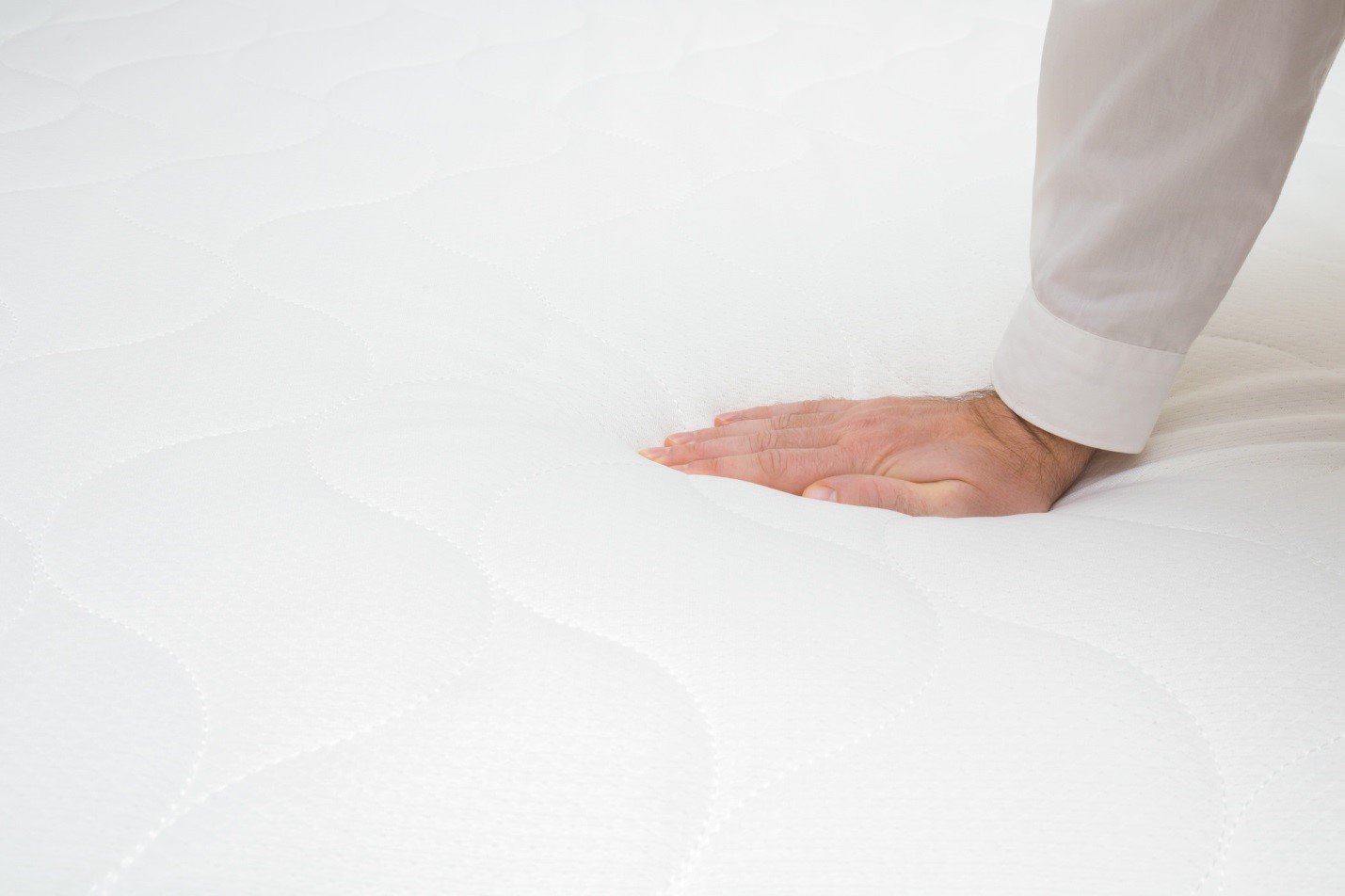Table of Contents Show
It’s no surprise that mattresses are the latest and greatest home essential. Advanced Temper-Pedic, water bed, and customized mattress options make it hard to stray from sleep-centered technologies.
Quality sleep translates into one’s quality of life. Too much or too little sleep impacts mental, physical, and emotional health, as well as life expectancy. Sleep doesn’t discriminate—whether you rent, own, or couch surf, finding the perfect mattress means knowing what’s in it.

It’s impossible to consider memory foam without questioning, are memory foam mattresses toxic? While “all press is good press” for celebrities, memory foam controversies are enough to steer anyone away.
Read on to see if you have memory foam toxic symptoms.
Read Also:
- Get Memory Foam Mattresses and How to Select the Exact Mattress You Need
- Hybrid Mattress Vs Memory Foam: Which Is Better?
- How to Choose a Bed and Mattress for Your Kid
- Tips to Buy a Memory Foam Mattress Online
- How to Choose the Right Mattress Online
- A Sleepers Guide to Types of Mattresses
- Innovative Mattress Designs in 2020
Are Memory Foam Mattresses Toxic?
The ultimate consumer blindspot rests in a product’s ingredients. It’s easy to determine a quality mattress based on its comfort level. We get it—there’s nothing like a seductive, foamy, sink-right-in mattress—but at what cost?
Some say the market speaks and there’s a reason for memory foam fans. Memory foam’s history, however, tells you all you need to know.
Memory foam was invented in the 1970s for NASA. It’s sensible to make such a convenient comfort accessible to those on Earth—but convenience usually costs something.
Is Memory Foam Safe?
The ample research around this question says it all. Memory foam mattresses have the following toxins.
- Polyols, or petroleum-based chemicals
- Methylene diisocyanates (MDIs)
- Toluene diisocyanates (TDIs)
- Hexamethylene diisocyanates (HDIs)
- Chlorofluorocarbons (CFCs)
- Hydrofluorocarbons (HFCs)
- Volatile Organic Compounds (VOCs)
- Polyurethane
While everyone loves memory foam’s luscious bubbles, it’s this open-cell technology that allows chemicals to move through the air and into your body.
Some live by a personal rule not to invest in products with foreign ingredients. Even if that’s not you, consider the above words on a food label. Not super appetizing.
If you wouldn’t put these ingredients in your body, why put them on your body? There are countless other options.
Is Memory Foam Bad for You?
Memory foam includes fire-retardant chemicals to ensure human safety. The ironic impact of this strategy is another threat to human safety. While memory foam’s safer now than it has been, you may be gambling your health on a controversial product.
There’s nothing worse than going to bed worrying about your bed. Sleep is hard enough for those not worrying about what they’re sleeping on.
Not knowing how your mattress can impact you is unnerving. The point of buying a good mattress is to get some sleep, not lose it!
If you’ve experienced the following symptoms, your memory foam may be the culprit.
- Increased allergy symptoms, including stuffy nose, eye irritation, and headaches
- Nausea or vomiting
- Respiratory problems
- Biorhythmic imbalance
- Sleep disturbance
- Dizziness or fainting
Persistent symptoms can turn into depression, anxiety, relationship disturbances, insomnia, chronic fatigue, and cardiac concerns. Worse than having physical symptoms is not knowing why you have them. Waking up wondering why you feel bad’s no way to live.
Good news! You don’t have to live that way.
There’s no reason to inhale mattress materials that smell like new cars or fresh paint. If you’re racking your brain for your sleep irritant, memory foam may be your blind spot. It’s time to consider what’s next.
The Memory Foam Debate
The truth is memory foam’s safer than it was, but it’s not incontestably safe; and who wants a product that’s not safe? Ambiguity’s not the time to buy.
The good news is there are great alternatives. Asking yourself, “is memory foam toxic?” can help you pivot towards guaranteed safer options.
Whether you’ve had your bed for ten years or two, its materials can have you wondering when to get a new mattress. Common mattress types are:
- Innerspring
- Pocketed coils
- Hybrid
- Latex
- Poly-foam
- Memory foam
- Airfoam
There’s rarely a perfect product, so you have to find what’s perfect for you. Ever-changing technology has transformed some toxic manufacturing, but you’ll still want to do your research.
Company transparency is key. If you can’t find your answers, that is your answer. Gone are the days when the body dictates mattress safety—it’s time to bring the brain on board.
Memory Foam Toxins
Knowing memory foam toxins lets you look for cleaner ingredients. Here’s how to know if your mattress has natural materials. It includes:
- Organic cotton
- Organic wool
- Bamboo
- Nontoxic processing
- Claims about being eco-friendly, green, sustainable, and environmentally conscious
- Plant-based options
- Global Organic Textile Standard (GOTS) certification
- Global Organic Latex Standard (GOLS) certification
Healthy mattress companies work to educate consumers about their mattress materials. Just like reputable businesses have accreditations, reputable products do too.
Instead of having pollutants in the air, a comfy and safe mattress makes it so that you can breathe with ease.
Quality mattresses aren’t just about their material or comfort level, but about how they’re manufactured. The mattress-making process can be a make-or-break moment.
It helps to have questions about what you’re investing in. You can start by asking, are memory foam mattresses toxic?
Memory Foam’s but a Memory
Buying a new mattress means saying yes to better health. If you’re still wondering, “are memory foam mattresses toxic?” there’s a reason for that.
There’s no need for an uncertain investment when there are other options. If you’re tired of feeling stuffy, physically uncomfortable, or concerned with mattress materials, it’s time to change your sagging mattress.
Quality mattresses have an influence on both your brain and body. While jumping into beds at the store is fun, remember to ask about the makings of the product.
For more on home designs, and dos and don’ts, check out our latest blog posts!










